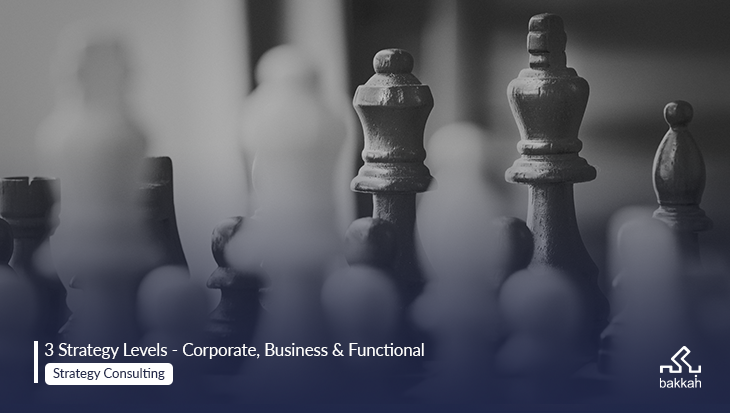Articles
Strategic Alignment: Everything You Need to Know

.png)
Strategic Alignment: Everything You Need to Know
In order to survive and prosper, organizations need to grow and adapt to the never-ending cycle of change. In its extensive research on business strategy and strategic alignment of projects, PMI® showed that only %56 of strategic initiatives undertaken by organizations are successful, while %44 are failing.
The failure percentage indicates a huge waste, and therefore, pushes a very important question: Why do projects fail? One of the biggest reasons is because they’re not aligned with organizational strategy! In other words, the project may finish in time and on budget, but still not be what the organization needed anyway. Avoiding this requires organizations to formulate a strategy to manage opportunities and risks, and that’s what we are about to address.
What is Strategic Alignment?
Strategic alignment is the process of working with business units, departments, teams, and individuals to connect their strategic efforts to the organization’s overarching strategic goals, objectives, and actions. It can be achieved by two interrelated mechanisms:
- The initial establishment of the project portfolio – takes place cyclically in fixed moments, for example, four times a year.
- The ongoing steering and adjusting of project portfolio – a continuous process throughout the whole year.
Where does Strategic Alignment Apply most?
It’s important to understand the different types of organizational structures, and which type of structure you’re operating within. Here are the two types:
- Traditional enterprise
Where projects are seen as independent entities under the watchful eye of the project manager. In a traditional enterprise, in order to create alignment, you need to review all current and future projects, prioritize them and then align them to the strategic goals for the business strategy.
- Project-driven enterprise
Where projects are aligned with the strategy. Here, what is lost in absolute flexibility is gained in a sense of purpose and clear contribution to the welfare of the organization. To maintain alignment in this type, you need to review strategic goals, prioritize projects to align to business strategy, and conduct a regular evaluation.
Why is Strategic Alignment Important?
- Alignment helps increase profitability and reduce unnecessary expenses, and this will be broadly discussed later on.
- Organizations that are strategically aligned operate more efficiently and achieve better outcomes.
- Strategic alignment enables every member and team to help the business create value for owners, customers, workers, and community and contribute to the plan to win.
- Lack of strategic alignment causes employees to lose faith in the vision, mission, and value proposition of the organization.
- Alignment can help improve project success rates and, therefore, the ability for the organization to address customer needs and expectations.
- When each project directly contributes to the welfare of the company, the organization as a whole improves, improving customer experiences and retention rates.
- Alignment gives clearer resource allocation decisions, as you have to quantify which projects add more (or less) value.
How does Strategic Alignment Help Eliminate Waste?
Without strategic alignment, managers may spend countless hours pursuing initiatives that, while they may be good ideas, aren’t the right things to focus on at the time. According to PMI's 2018 Pulse of the Profession Survey, $1 million is wasted every 20 seconds by organizations around the world. To save up this relatively high percentage, it is recommended to:
- Do a waste audit – a thought-out process that is used to determine the amount and types of waste produced by a company.
- Provide structure and clarity of purpose for employees.
- Increase team members' coordination, communication, and buy-in.
- Communicate waste goals to your customers.
- Clarify the capabilities and competitive advantages of the organization.
- Empower all team members to shape the future of the organization.
- Reduce or abolish workplace redundancies.
How to Apply Strategic Alignment?
No matter how much effort is put into developing cutting-edge, technology-driven initiatives and solutions, it will all be useless unless it is aligned with the needs of the organization. There are some basic factors that can help effectively apply strategic alignment, for example, make sure to:
- Communicate the strategy at all levels of the organization in a simple and easy-to-understand way, as staff members can implement a new strategy successfully only if they are able to understand and accept it.
- Engage the employees – Participating in the decision-making process is always more preferable to the decision being imposed.
- Link the individual performance goals to strategy. The good and outstanding performance of teams and departments should be recognized and rewarded.
- Reflect the strategy by HR management through hiring, training, and retaining the right people to ensure that your staff has the skills and capabilities required for the best possible implementation of your strategy.
- Enable the free flow of information across organizational boundaries, either between teams and departments or from top management all the way to front-line employees.
- Monitor Progress so that quick course corrections can easily be made whenever problems arise. A commonly used tool for monitoring progress is the Balanced Scorecard.
Strategic Alignment with Balanced Scorecards Approach
Balanced Scorecards is a performance measurement framework that combines financial and non-financial measures of performance with the objective of aligning strategy with the business, motivating better communication and consequently leading to improved performance. It is more than a way of keeping score; it is a system, consisting of people, strategy, processes, and technology.
The BSC tool:
- Measures the impacts, influence, and leverage of organizational activities and other long-term goals in general.
- Groups existing measures into categories and displays the measures graphically.
- Balances measures of the customer, internal process, and learning and growth against traditional financial measures.
- Translates vision and strategy, and defines the linkages to integrating performance across an organization.
- Communicates objectives and measures to the business units.
- Provides feedback to management about the strategy implantation.
- Aligns all the strategic initiatives with business challenges.
Mapping a strategy is an important way of evaluating and making an organization’s perspectives, objectives and measures visually explicit, and also the causal linkages between them. Process mapping, represented by strategy maps, makes this alignment and the relationship between a performance scorecard and the organization’s strategy.
In order to develop a strategy map, managers need to:
- Select a few strategic objectives within each of the perspectives.
- Define the cause-effect chain among these objectives, by drawing links between them.
- Derive a BSC of strategic performance measures directly from the strategic objectives.
- Identify and align long-term strategic initiatives, reducing the attention on short-term financial measures, and increasing the focus on drivers of long-term success.
BSC is a truly beneficial tool for the alignment of organizational strategy with business when fully integrated and adopted by an organization. To create an organizational alignment, a BSC needs to be designed for all levels of the organization, as a means of ensuring that all the employees are pursuing goals that are consistent with, and lead to, the achievement of the organization’s strategy.
A business is like a machine with a lot of moving parts. When the parts or activities of a business are aligned, there is less friction and tension. Gradually, strategic alignment begins to show up in conversations, business practices, daily routines, product development initiatives, and customer relationships. It will influence every activity and become an integral part of the organization’s culture. Amazing things happen when organizations pay attention to the strategic alignment process.
Bakkah provides consulting services on all matters related to strategy, from assessment, development, to the tools and performance reports needed for improvement. To learn more, click here.

